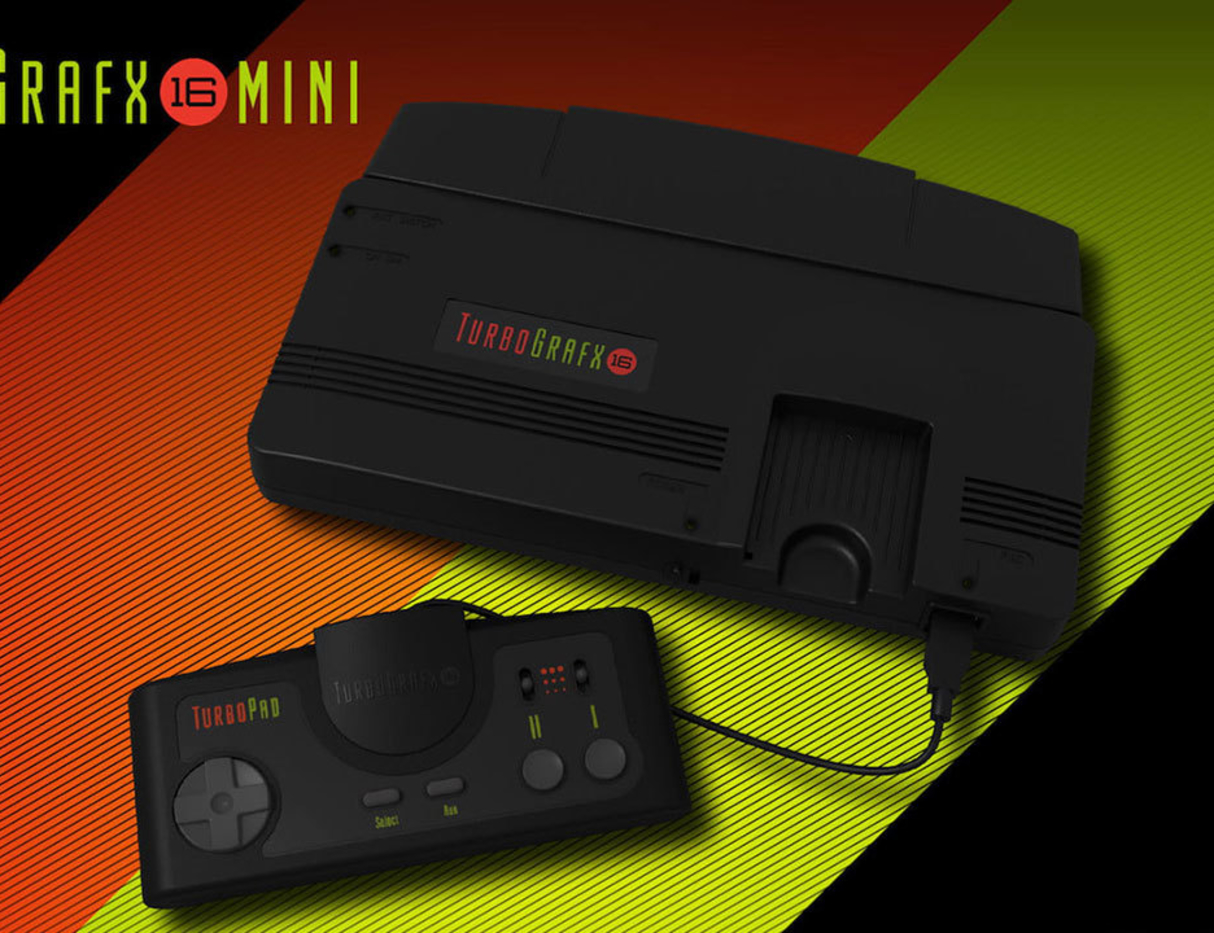The Turbo GraFx 16 was developed by both Hudson Soft and NEC Corporation and released in North America on August 19th, 1989 and the PC Engine was released in October 30th, 1987. The Turbo GraFx 16 and PC Engine both used Hu Cards as their game cartridges.
The Turbo GraFx was a bit bigger than it’s Japanese counterpart the PC Engine. I’d imagine that was more intune with the whole America likes things “BIGGER” and the Mini Console variations aren’t much different. The Turbo GraFx 16 mini is larger than the PC Engine Mini
All in All the build quality is solid. I mean it’s plastic and when I took the TG16 mini apart the other half of the console was just dead space but the overall design of the mini console is exactly like the original hardware. Minus the HDMI and USB ports but you get the idea.
It has a decent list of Turbo GraFx 16, PC Engine, and PC Engine CD Games. Also as an added bonus it has the ENTIRE library of Super GraFx games….I made that sound a lot more impressive than it actually is. The Super GraFx only had like four games for it.
You can actually switch between the consoles on the bottom right-hand corner to check out the different games as well. So you can go from the TG16 to PC Engine and to Super GraFx. I thought this was kind of dope actually.
In the settings menu you can choose different backgrounds and even different screen resolutions such as 4:3 and 16:9 which I don’t recommend. It’s just super stretched out and will make your eyeballs bleed. But if you want to know what it feels like to see Bonk’s adventure on the Turbo Express now you can. Not a useful feature but still it’s pretty cool they tossed that in there.
The Controller feels good and I opened it up as well and didn’t notice any extra weights added to it. Cause sometimes manufacturers will do that to add extra weight to the controller to make it feel more sturdy or solid.
This is an emulation box just like a Pi, a PC or an oDroid and you will notice some input lag in some games and the dreaded “SHIMMER” like in R-Type but the emulation was done by M2. M2 is amazing at software emulation and for more info on them My Life In Gaming has an awesome episode and I’ll include a link to that video in the description.
Also in the video description I included a link to Ray Commando’s Ko-Fi page. Here you can find a whole cheat sheet he created to either access some of the Hidden Arcade versions of games or add extra lives like you probably noticed me doing during the video. As always thank you for checking out the channel and if you can hit like and subscribe it’s always appreciated and while you’re at it hit like and subscribe for anyone else’s videos that you enjoy as well. Take care and have a great day everyone 🙂
Check out Justin on the Nerd Caster podcast and some of his games on the RGH youtube channel.






